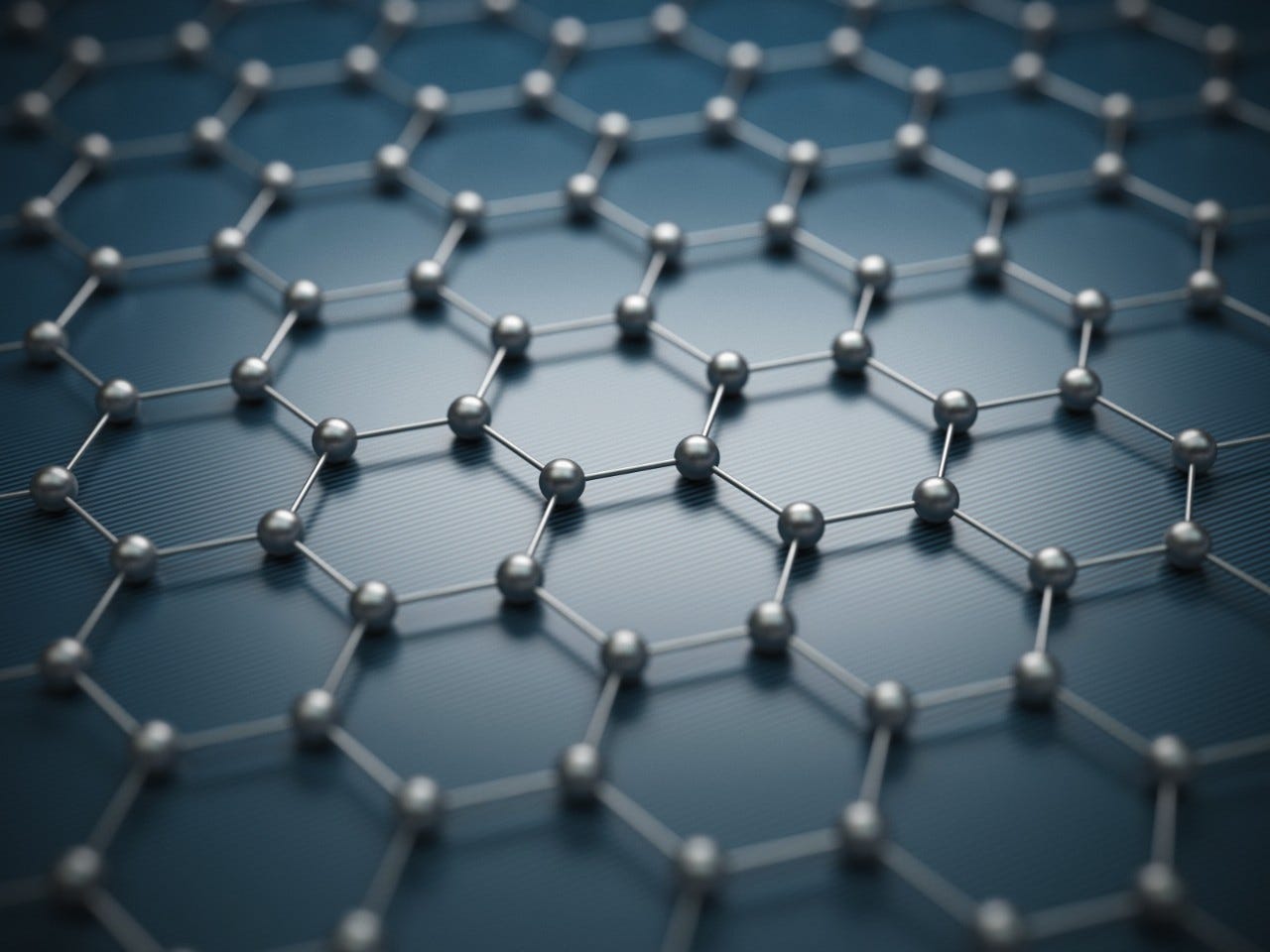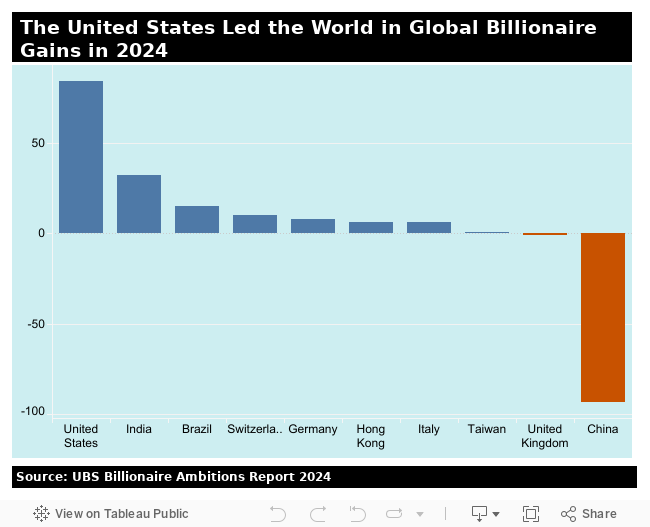Yves here. Readers who have taken note of the performance of DeepSeek AI or other Chinese technical feats, like their super cheap EVs, dark factories, number of patents issued would not be surprised to learn that the US is lagging China. This Tom Neuburger post provides some details.
By Thomas Neuburger. Originally published at God’s Spies
It’s not difficult today to find articles on China’s great leaps forward in high tech development, and indeed, in development of all kinds. Ian Welsh, for example, has been ringing this bell for a while. A good example is here:
Forget GDP, it’s completely misleading. China is ahead in everything that matters: 80%+ of tech fields, has more population and the largest industrial base in the world and it’s the main trade partner of more nations than anyone else, including America.
This graphic is illustrative, but it applies to everything except planes and launch capacity, and soon it will apply to them too[.]
The graphic referred to is sobering:
For more of Welsh’s China reflections, go here.
China and Tech Innovation
But one story in particular struck me as beyond remarkable:
World’s fastest memory writes 25 billion bits per sec, 10,000× faster than current tech
PoX could be the key to unlocking performance bottlenecks caused by storage limitations in AI hardware
A research team at Fudan University has built the fastest semiconductor storage device ever reported, a non‑volatile flash memory dubbed “PoX” that programs a single bit in 400 picoseconds (0.0000000004 s) — roughly 25 billion operations per second. The result, published today in Nature, pushes non‑volatile memory to a speed domain previously reserved for the quickest volatile memories and sets a benchmark for data‑hungry AI hardware.
I’ll spare you the jargon. Non-volatile flash memory is memory that persists when the power is turned off. It’s the BIOS at the core of your laptop, the flash drive the size of your thumb. As you know, writing to flash drives is slow. What the Chinese have done, is, with new technology, increased the write speed by a factor of 10,000.
Notice the use of “graphene,” by the way, in the design of this product. Graphene is a miraculous and under-used substance — under-used because its use involves great technical difficulties. But the promise is great, as the above report shows. China is not alone in graphene development, but they’re at the head of the pack.
This is an artist’s representation, but accurate. It’s truly two-dimensional:
 Yet it’s considered the strongest substance in nature at a molecular scale, with incredible electrical properties. There’s more on its promise here.
Yet it’s considered the strongest substance in nature at a molecular scale, with incredible electrical properties. There’s more on its promise here.
China, Pride and the West
My point is not about tech, not primarily. It’s about China. While the U.S. was busy making its rich people richer (when you own the government, you can make it dance to your tune), China was making China great again.
I mean that literally. The history of China is a story of national greatness: the earliest dynasty, the Xia, dates to 2000 BC; the first Empire, the Qin (“chin”), dates to the Roman conquest of Greece. By the end of the 18th century, the Qing (“ching”) dynasty ruled a third of the world’s population; and its country contained earth’s largest economy.
That greatness was followed by a fall: subjugation to the will of the West, primarily Great Britain at first, as discussed in works like Alfred McCoy’s To Govern the Globe, the story of the West’s brutal treatment of, well, everyone else in the world. (Our ongoing discussion of McCoy can be found here.) From the mid-1800s on, China became a client state of the West.
The Chinese are keenly aware of this great embarrassment, this blot on their historical record, and many have argued that this, more than wealth, drives Chinese policy today. You can see Chinese pride, for example, in the current government’s approach to corporate corruption, a striking contrast to our own, where corruption has almost become a fourth branch of the state. (Welsh comments on that briefly here.)

All this is to say that China is technically leaps ahead of the rest, as you may have read in stories about DeepSeek AI or the stunning BYD all-electric cars, whose selling price in China starts around $8,000. In contrast, the cheapest vehicles in the U.S., all gasoline powered, start around $20,000.
China’s Post-Silicon World
A final story, this from a former Intel executive, now CEO of a Chinese ATE company. (ATE means “automatic test equipment,” the chip-test industry.) Here’s Part 3 of his discussion of memory chips (reformatted slightly for clarity):
PART 3: Moore’s Law is dead. China’s not mourning—it’s moving on.
While the West clings to silicon and EUV [extreme ultraviolet lithography, a chip-making technique], Beijing is building a post-silicon future—with light, atoms, and brains.
If you thought atomic memory was scary… wait till you see what’s next.
Thread:
Most people think chip wars are about EUV, 3nm [3 nanometers, the size of a single transistor on a chip], and NVIDIA. That’s yesterday’s game. China’s playing on a different board now: Post-Silicon Computing.Photonics
Neuromorphic chips
Spintronics
2D [two-dimensional] materials
[2/15]Why ditch silicon? Because physics won’t play ball anymore.
We hit atomic limits
Heat throttles performance
Quantum effects break transistors
Silicon is choking. Moore’s Law is over.
[3/15]China saw this early. Instead of racing TSMC [Taiwan Semiconductor Manufacturing Company Limited] to 1nm, it’s building alt-tech ecosystems:
Memory from 2D crystals [graphene]
Processors that use light not electrons
AI chips that mimic the human brain
All skirting U.S. sanctions.
[4/15]Example: Photonic Chips
Light-based logic, no heat, near-infinite bandwidth. Tsinghua + Huawei built photonic tensor cores for AI—10x the speed at 1% power. No EUV. No Intel. No problem.
[5/15]Example: Neuromorphic Computing
Think chips that think like brains. China’s Tianjic and Darwin chips use spiking neural networks—ideal for edge AI and robotics. Forget GPU farms—this is on-device intelligence.
[6/15]Example: Spintronics
Using electron spin instead of charge. Fudan and CAS are prototyping memory and logic devices with zero leakage, zero volatility, and atomic scale density.
[7/15]And it all connects to the memory bomb we dropped in Part 1 & 2:
2D memory = foundation
Photonics/Neuromorphics = compute layer
All built without TSMC, ASML, or ArmChina’s breaking the U.S. tech siege by jumping over it.
[8/15]Why this matters: The West has bet everything on scaling silicon and squeezing EUV. But China is building a parallel ecosystem, born in national labs, designed for strategic decoupling.
[9/15]Western analysts dismiss it as “not ready.” That’s what they said about:
Chinese EVs
5G
Solar
DronesNow those industries are owned by China.
[10/15]And while the U.S. throws $52B at TSMC Arizona delays, China is:
Publishing thousands of post-silicon papers
Funding 100+ new labs under “863” and “Key R&D” programs
Launching “More than Moore” pilot fabsThis is national strategy, not startup vaporware.
[11/15]Even Huawei—banned, sanctioned, bleeding—just released AI chips rumored to contain photonic interconnects and 2D SRAM. They didn’t die. They evolved.
[12/15]Remember this: The U.S. controls the past of computing. Silicon Valley is named after a dying substrate [silicon]. But China may control what comes after—and it won’t be built with silicon.
[13/15]You don’t need to beat NVIDIA. You just need to make NVIDIA irrelevant. China’s post-silicon roadmap is a bet against the status quo—and it’s accelerating.
[14/15]Next up (Part 4):
If China controls post-silicon computing, who controls the new standards?
Quantum encryption, chip-to-chip photonics, edge AI models—
The next war isn’t on the chip. It’s on the protocol. #MemoryWars continues.
[15/15]
I really don’t want the focus to be on Trump. He’s not the fire; he’s just an accelerant. The fire is the greed of the rich, their capture of government, and their constant shortsightedness when faced with the gleam of more wealth.
How crass, how tragic, how low, how mean their desires. That we went along, that we fed them, how sad for ourselves.


